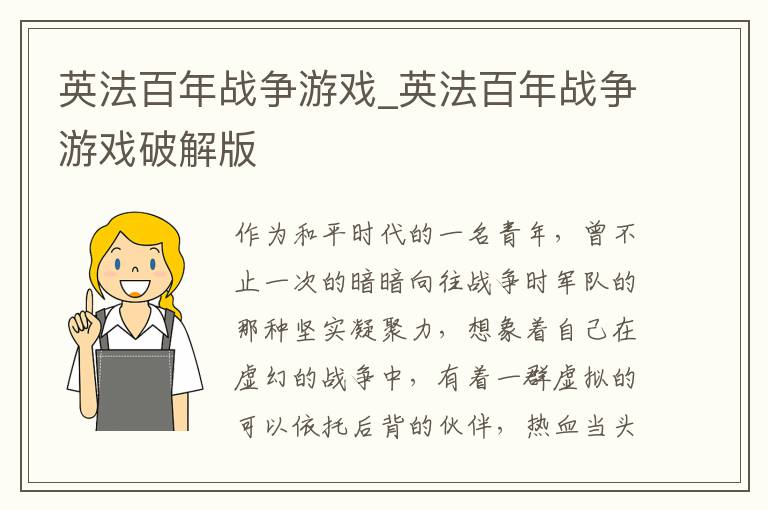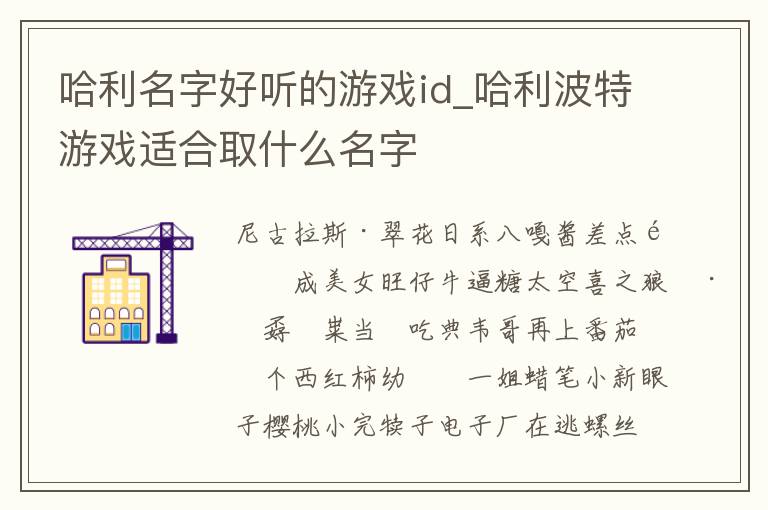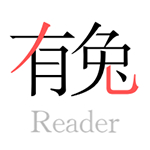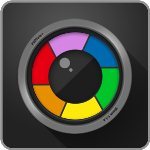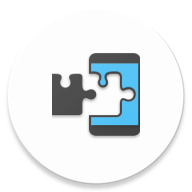lop游戏安卓_lop游戏安卓版下载
无心下载站2022-12-03 09:57:11
When I look back at 2020, the first thing that comes to mind will obviously be the world-stopping pandemic, but the next thing I remember might be that this is the year slab smartphones reached its apex—every smartphone brand mastered the art of making a great smartphone.
当我回顾2020年的时候,最先想到的当然是让世界停滞的疫情,不过之后我会想到这可能是智能手机发展达到巅峰的一年——每个手机品牌都能推出非常棒的手机产品。
This is a great thing for consumers, because every recent smartphone above, say, $600, offers premium build quality, high refresh rate screen with super smooth animations, and a main camera that is very capable in all lighting conditions. It just makes my job as a reviewer much tougher because every phone is very good.
这对消费者而言是件好事。几乎最近新推出的600美元以上(约4000元人民币以上价位)的手机都有对得起价格的良好质量、高刷新率屏幕、非常流畅的显示效果,以及一颗能应对绝大部分光照情况的主摄像头。这也给我的评测工作带来了很大困难,因为每个型号都很好。
The reason phone performances have become more similar than ever is because they all copied from each other. I first came to this realization earlier this year when I reviewed the OnePlus 8 Pro. It was yet another ultra fluid, ultra fast smartphone from the company known for producing the fastest and zippiest phones. But the 8 Pro was not significantly faster than rivals anymore, because others had followed OnePlus’ lead and used a high-refresh screen, sped up animations, and use copious amount of RAM.
之所以各家手机性能越来越接近,是因为它们都在互相借鉴。我最开始意识到这一点是我在评测一加8Pro时。以生产最快、最流畅手机著称的一加公司,推出的8Pro运行速度虽然也非常快速流畅,但和竞争对手相比优势不再那么明显,因为其它竞争对手也学习一加才用了高刷屏、优化了过场动画并增加了RAM运存容量。
The same has happened to Huawei’s smartphones. Just a couple of years ago, Huawei flagships had battery life and low-light camera performance that lapped competitors. And I mean literally: Huawei phones from 2016 to 2018 had battery life that lasted at least six to eight hours longer than an iPhone or Samsung under the same usage scenario, and its ability to pull light into a pitch black scene was so far ahead of what the iPhone could do I posted comparison photos to Twitter, which was used by a writer at The Verge in an article criticizing Apple’s cameras.
这一切也在华为手机上出现了。前几年,华为旗舰手机在电池容量和暗光拍摄上领先竞争对手。这是真的:2016-18年间,华为手机的电池使用时间要比iPhone或三星手机在相同使用强度下多6-8个小时。且老款华为手机的暗光拍摄效果,比最新的苹果手机还要强。我此前曾做过一个暗光拍摄照片对比,这张照片还被科技媒体The Verge作者用来批评苹果的摄像头。
去年作者发布的华为、三星和苹果暗光拍摄对比照片
How did Huawei achieve such dominance in camera? It used a larger image sensor and a higher megapixel camera (40-megapixel at a time when brands were all using 12- to 16-megapixel) than competitors. The larger image sensor pulls in more light, and the more pixels are put through a process called “pixel-binning” which combines four pixels into one so each pixel has more information than usual.
华为是如何在镜头上实现这般统治力的?这是因为它使用了比竞争对手更大的感光元件以及像素更高的镜头(华为上4000万像素镜头时,其它品牌大多还在用1200万-1600万像素的镜头)。更大的感光元件可以接收更多的光,而更高像素的镜头可以通过“像素合并”的方式,将4个像素合并为一个,以实现在一个像素内呈现更多信息。
This superior hardware is also backed by smart software image processing that uses a multi-image stacking algorithm to further tweak lighting and dynamic range in a photo.
除了出众的硬件配置外,优秀的图像处理软件也起到了锦上添花的作用。通过软件的堆栈算法,可以进一步调整照片的亮度及动态范围。
All of these moves have been adopted by competitors. Samsung began using a larger image sensor earlier this year with the S20 Ultra, and Apple will do the same with its upcoming iPhone 12 Pro Max. Apple also adopted the image-stacking software technique known as “night mode” beginning with last year’s iPhone 11, and further refined for this year’s 12.
现在这些方法都被竞争对手采用了,例如三星在S20 Ultra上也开始使用更大的感光,而苹果在即将发布的iPhone 12 Pro Max上估计会采用相同策略。从去年的iPhone11开始,苹果也才用了类似算法的“夜景模式”,并在今年的iPhone12上进一步完善。
The improvements made by Apple and Samsung are immediately noticeable—both the latest iPhones and Samsung phones can now also “see in the dark” in the same way Huawei phones can. I can’t take comparison photos and have them turn out as lop-sided as the tweet above anymore.
苹果和三星的改善措施是肉眼可见的——两家的手机现在也能做到华为手机此前实现的“暗光拍摄”了。我再也拍不出之前在推特上发布的那种一边倒的对比照片了。
At least not with the main camera. Huawei, perhaps realizing the main camera tech has reached its apex, began focusing on the secondary ultrawide camera last year, and it is this lens where the Mate 40 Pro shines above the rest. But is it enough?
至少在主摄像头上它们都相差无几。也许是意识到主摄像头技术已经发展到极致,华为去年起将重心放到了次要的超广角镜头上,正是凭着这颗镜头,让Mate 40 Pro脱颖而出。但这就足够了吗?
Design and hardware
设计与硬件
Huawei’s Mate series has traditionally been Huawei’s top dog phone, because its release coincides with the official launch of Huawei’s newest Kirin chip. This year, the Kirin 9000 powering the phones is a bleeding-edge silicon built on 5nm technology—the same as Apple’s A14 Bionic—but the Kirin 9000 one ups the A14 Bionic in that it has an integrated 5G modem built in.
华为Mate系列一向是华为顶级旗舰系列,因为它的发布时间往往和华为最新的麒麟芯片重合。今年使用的Kirin 9000才用了最尖端的5nm技术,和苹果的A14仿生芯片一样。不过Kirin 9000和A14相比的优势在于它内置了5G模块。
This means whether it’s benchmark scores or real world performance, the Kirin 9000 is quite a bit ahead of the Qualcomm Snapdragon 865 powering other Android phones right now.
这意味着在benchmark跑分及实际使用上,Kirin 9000比其它安卓手机用的高通骁龙865有较为明显的优势。
On the outside, the Mate 40 Pro is a gorgeous piece of hardware as usual. The overall aesthetic of the Mate 40 Pro follows the design language set by the Mate 20 Pro, with a centrally located camera module, curved screens, and a real 3D facial scanning system for iPhone-like face unlock.
从外观来看,Mate 40 Pro也是一款非常棒的设备。整体的设计语言延续了Mate 20 Pro以来的风格:居中的前置摄像头、曲面屏、以及能提供类似iPhone脸部解锁功能的3D面部识别系统。
The drastic curved screen introduced in last year’s Mate 30 Pro—the left and right side slopes at 88-degrees, which Huawei has dubbed “Horizon Display”—returns, and it is as striking as ever.
去年华为Mate 30 Pro上使用的左右两侧弯曲角度高达88度的“瀑布屏”在最新款上仍然保留,这夸张的曲面屏现在看起来仍然令人震撼。
Don’t worry about accidental unwanted palm touches—Huawei’s software algorithm does a flawless job of preventing them.
不需要担心手掌的误触哦,因为华为的软件算法在防误触方面做得相当完美。
The back glass is coated in this soft matte finish, which feels soft to the touch and is resistant to fingerprints. It also shimmers in different colors depending on how the light hits the back—albeit much more subtle than before.
背部玻璃进行了哑光磨砂处理,触感温和且能有效防指纹。光线从不同角度照射时,能反射出不同颜色——虽然和前一代相比色彩更加低调。
The screen being 6.67-inches, the Mate 40 Pro is a rather large phone, but the curvature and matte back helps it sit comfortably in the hand.
采用了6.67寸屏的Mate 40 Pro是一部相当大的手机,但是弯曲弧度以及背部的磨砂处理让手机的持感还是相当舒服的。
The screen refreshes at 90Hz, which is not the fastest on the market, but animations appear smooth enough. It’s a gorgeous, vibrant panel, with maximum brightness and viewing angles that matches the best screens on the market.
屏幕的刷新率为90Hz,不算市场上最快的,但过场效果足够流畅。屏幕素质优秀、色彩鲜艳,和市面上最好的屏幕相比,在亮度和可视角度上毫不逊色。
There is a larger-than-usual (for Android) screen cut-out in the upper left corner of the display, but it’s for good use: this is where Huawei houses its powerful front-facing camera system, which includes a 13-megapixel selfie camera, a wide-angle camera with a field-of-view of 100-degrees, and an infrared camera for face scanning.
屏幕上方有一个较其它(安卓)手机更大的挖孔,这个挖孔是有大作用的:华为在这里安装了强大的前置相机组件,包括1300万像素的自拍镜头、视角高达100度的广角镜头和用于面部扫描的红外镜头。
That Huawei managed to cram a real 3D face scanning system into an area that small makes the notch in iPhones look bad. And that ultrawide selfie camera works great, too—more on this in the next section.
华为在这么小的空间内塞进了一整套3D面部识别系统,让iPhone相形见绌。此外,超广角的自拍镜头效果也很棒——这一点我们在下一节会具体谈到。
Cameras
摄像头
The Mate 40 Pro’s main camera system consists of a triple lens set-up, headlined by a 50-megapixel main sensor and 20-megapixel ultrawide-angle camera and flanked by a 13-megapixel Periscope camera.
Mate 40 Pro的后置镜头包括一个5000万像素主镜头、2000万像素的超广角镜头和1300万像素的潜望式镜头。
Notice I gave the ultrawide angle camera top billing alongside the main 50-megapixel sensor, which I had never done in my reviews before. That’s because on the Mate 40 Pro, the ultrawide camera is not an afterthought.
请注意,对这颗广角镜头,我给出了和主镜头一样的最高评分,这在我此前的评测上从未出现过。因为Mate 40 Pro使用的超广角镜头不再是用来凑数的。
Dubbed “Cine Lens” by Huawei, this ultrawide angle camera shoots at a 4:3 aspect ratio, and is the default video camera. It’s got a narrower field-of-view than the ultrawide lens on an iPhone or Samsung, but Huawei’s 20-megapixel ultrawide camera packs significantly more details in the shot thanks to more pixels and a larger sensor. In other words, the same tricks Huawei pioneered with the main camera that other brands have adopted—but not yet for the secondary cameras.
这颗被华为称为“电影镜头”的超广角镜头是默认的视频拍摄镜头,它虽然是以4:3拍摄,视角较iPhone和三星的超广角镜头低一点,但华为的这颗镜头是2000万像素以及大底,因此采集到的细节远比前两者更多。换句话说,虽然其它品牌在主镜头上模仿了华为的创新,但在次要镜头上它们还没跟上。
The results speak for themselves. Take a look at this ultrawide angle shot captured by the Mate 40 Pro.
实拍照片说明一切。下图是Mate 40 Pro的超广角镜头实片。
Now look at the same shot but captured with an iPhone 12.
接下来我们看看iPhone12的超广角实片。
If your eyesight is great, you should already be able to see the extra sharpness in the details in Huawei’s shot. Not to mention, the superior dynamic range.
如果你的视觉敏锐的话,应该可以马上看到华为照片细节更加清晰,更不用说它出众的动态范围了。
But for those of you who can’t quite see the difference from a far, here’s a zoomed in crop of both photos.
如果你看得不少很清楚的话,那我们将两张照片放大看看
Everything in the Huawei shot (left), from the blue street sign, to flowers on the wall, to the texture of the colorful shirt worn by the person closest to the camera, is clearly sharper than in the iPhone 12 image.
华为照片(上图左侧)里呈现的细节、包括蓝色路牌、墙上的花以及靠近镜头路人身上花衬衣的质感,都明显比iPhone12的强(上图右侧)。
Here’s another set of samples. Let’s start with Mate 40 Pro ultrawide:
以下是另一组超广角镜头样片对比,先看华为Mate 40 Pro的:
And iPhone 12 ultrawide.
下面是iPhone 12的。
And here’s a closer look at both pictures side-by-side.
来对比一下两张照片
左侧是华为Mate 40 Pro实拍,右侧是iPhone 12
You can still read the words in the traffic sign on the Mate 40 Pro’s image; whereas it’s a blur in the iPhone 12’s shot.
可以看到华为照片(左侧)里交通指示牌上的字迹仍然可辨,而苹果的已经糊了。(译者注:我从原始网页下载了照片,但可能是上传时尺寸限制,两张照片路牌字迹都不清楚,只能说华为的看起来好一点)
Now, is this a huge deal to most people? Probably not. One can easily argue that the point of taking an ultrawide angle photo is to show the entire photo, since it has a wider field of view and thus is great for sweeping landscape shots. However, there are instances when you do want to crop in, and it’s just nice to have that extra detail in Huawei’s cameras.
不过这对大多数用户来说很重要吗?可能不是。有些人可能会说用超广角镜头时为了拍摄全景,因为镜头的视角更大,所以更适合用来拍风景照片。但是有时候你也需要把图片放大,像华为的镜头这样有更多的细节总是好的。
What’s more, this is a level of consistency that other phone cameras should strive for: on a Huawei Mate 40 Pro, shooting with the second or third camera doesn’t mean a significant step down in camera performance. You can’t say the same on an iPhone or Samsung Galaxy Note 20 Ultra, which clearly prioritized the main camera above all else.
此外,使用华为Mate 40 Pro的第二、三颗镜头拍照并不会导致照片效果的明显下降,这也是其他手机厂商需要努力达到的镜头效果一致性。而iPhone和三星Note 20 Ultra则没做到这一点,它们明显更加重视主镜头。
Huawei’s focus on polishing the ultrawide lens carries over to that front-facing ultrawide selfie camera, too. Like the one on the back, this lens keeps sharpness and exposure consistent with the main selfie camera, allowing a much wider field of view. Throw in good digital image stabilization and the Mate 40 Pro is instantly one of the best vlog cameras around, allowing users to film themselves without a selfie stick and still get wide enough framing so their head doesn’t take up half the scene.
华为对超广角镜头的打磨功力也体现在了前置超广角镜头上。和后置那颗一样,前置超广角镜头在清晰度和曝光水平上与主自拍镜头保持了相同水准,并能实现更大的视野。再加上良好的数码防抖技术,可以让用户在不使用自拍杆的情况下实现更大的拍摄角度,这也让Mate 40 Pro成为最适合自拍视频的手机(至少用户的脸不会占掉半个屏幕)。
Huawei’s main camera, as I mentioned at the beginning, used to be heads and shoulders above the competition in terms of night photography. The gap has closed significantly as Samsung and Apple has caught up, but that’s not to say Huawei’s main camera isn’t still great. That main 50-megapixel lens still has the largest image sensor in all of smartphones at 1/1.28-inch, and Huawei’s custom-built RYYB sensor still allows it to take the crown as the best camera in low-light situations. It’s just the win is smaller than in previous years.
正如我此前提到过,华为的主镜头在暗光拍摄能力上曾大幅领先竞争对手。但随着三星和苹果的追赶,它们之间的差距已明显缩小,但这并不代表华为的主镜头不优秀。这颗5000万像素的主镜头仍然拥有智能手机中最大感光尺寸1/1.28英寸,且华为定制的RYYB镜头确保了其在暗光摄影上的领先地位,只不过领先的幅度较前几年相比缩小了而已。
Mate 40 Pro 主镜头
Mate 40 Pro 主镜头
Mate 40 Pro夜景模式
The zooming capabilities of the Mate 40 Pro is still among the strongest, though the 13-megapixel 5x optical Periscope zoom lens here is not Huawei’s best offering. That’s because there’s even a higher tier Mate 40 Pro+ that houses a 10x optical Periscope camera, the same one used in the P40 Pro+.
虽然1300万像素、5倍光学变焦的潜望式镜头并不是华为手机里最强大的,Mate 40 Pro的变焦能力仍然是各机型中最强的之一。这是因为在Pro定位之上,还有一款Mate 40 Pro+,它使用了和P40 Pro+同款的10倍光学变焦潜望式镜头。
Still, any zoom under 20x appears well-detailed, and anything 10x or under appears sharp as if it was regular photo. Below is a collage of photos captured at 1x, 10x, 20x and 50x.
不过即便这样,Mate 40 Pro在变焦不超过20倍时,照片细节仍然良好,而在不超过10倍变焦时,照片清晰度和正常拍摄的几乎无异。下图分别是1x, 10x, 20x和50x的对比。
Software
软件
By now, most readers should know the software restrictions that have been placed on Huawei’s phones by the U.S. government. The Mate 40 Pro cannot run core Google services, including YouTube, Gmail, Google Drive, Google Docs, among others.
现在,大多数人都知道美国政府对华为手机进行了软件方面的限制。Mate 40 Pro是无法运行谷歌服务的,包括YouTube,Gmail,Google Drive,Google Docs等等。
Other than YouTube—a monopoly with no credible competition outside of China—all the other Google services have alternatives from Microsoft or a dozen other companies that can get the job done. As a consumer, you have to decide if you can live without those apps. For me, the situation will never be ideal, but I can make do without them.
除了YouTube这个在中国以外区域没有竞争对手的垄断app之外,其它谷歌服务都有微软和其它很多公司推出的优秀替代应用。作为消费者,你需要权衡自己是否能够忍受无法使用谷歌应用。就我个人而言,虽然这种情况不算理想,但没有谷歌应用我是能忍受的。
The Mate 40 Pro runs EMUI 11, the newest version of Huawei’s Android skin, and the biggest improvement this year come in multi-tasking. You can now swipe from the side of the screen at any time to open a quick app launcher, and these apps open in a floating window that can be resized. They can also be minimized into a floating ball on the screen. In this setup, the app is still running but it takes up just a tiny portion of screen space unless you enlarge the ball.
Mate 40 Pro运行的是基于安卓的、华为最新的EMUI 11系统。该系统今年最大的优化是多任务处理。现在可以随时从屏幕的任何一侧划过,唤出应用选择界面,以可调整尺寸的悬浮窗形式展现,还可以将它们缩小成悬浮球形状。在这种情况下,该应用仅占据屏幕的一小部分运行,直到你将悬浮球放大。
华为多任务分屏界面
This has been particularly useful for me as I’ve had to juggle constant WhatsApp and Slack messages lately due to a new work situation. On an iPhone, anytime I need to read a new message, I have to switch away from whatever I’m doing (maybe it’s a video, maybe it’s an article), and go into that particular app. On the Mate 40 Pro, I leave Slack and WhatsApp running in floating ball state, and when I do have a new message, I enlarge it to a small floating window that takes up maybe 1/3 of the screen, leaving me enough space to continue scrolling Twitter, or writing that email.
这个功能对我来说特别有用,因为工作原因,我进来需要不停处理WhatsApp和Slack里的信息。在iPhone上,如果我要阅读新信息的话,就必须从当前应用(例如视频或者文章)切换到信息应用里。而在Mate 40 Pro上,我让Slack和WhatsApp以悬浮球形式运行,在收到新消息时,我只需要将其放大为占据屏幕1/3大小的小悬浮窗即可,让我有足够的空间可以继续翻翻推特或者写邮件。
Despite uncertainty, Huawei chugs along
虽然面临不确定性,华为仍在前进
There’s no sugarcoating this: the Google situation, and the nonstop attacks by the U.S. government has severely hurt the appeal of Huawei smartphones to average consumers.
虽然情况不是很好:谷歌的立场、美国政府的不断攻击等等都严重影响了华为手机对普通消费者的吸引力。
The Mate 40 Pro will still have plenty of interested buyers (even outside of China), because it has a unique design, and still best-in-class cameras. But those who pay 1,199 euro for this will almost certainly be enthusiasts, or Huawei loyal fans.
但仍然有大量消费者(甚至中国以外的消费者)对Mate 40 Pro感兴趣,因为它拥有独特的设计、顶尖的摄像头模组。不过愿意花1199欧元来买这台设备的人,肯定是数码爱好者或者华为的忠实消费者。
版权声明:部分内容为互联网整合,文中观点不代表本站立场。本站仅提供信息存储空间服务,不拥有所有权,不承担相关法律责任。如发现本站有涉嫌抄袭侵权/违法违规的内容,请发送邮件至举报,一经查实,本站将立刻删除。
相关阅读
- 光遇4月26日大蜡烛位置图文详情一览
- 烟雨江湖陶渊溢怎么加入队伍攻略
- 方舟生存进化代码有哪些
- 黑暗笔录钳子介绍 第一章通关钳子在哪说明
- 无期迷途琳角色属性说明 琳技能介绍
- 以闪亮之名新城环游怎么玩 以闪亮之名新城环游攻略
- 碧蓝航线DOA复刻活动新皮肤有哪些 DOA复刻活动新皮肤一览
- 金铲铲之战天神决斗介绍 天神决斗阵容推荐
- 金铲铲之战天选福星四忍六刺阿卡丽怎么玩 天选福星四忍六刺阿卡丽装备搭配
- 暗区突围军港秘闻照片在哪 暗区突围军港秘闻照片位置一览
- 鹅鸭杀新地图血夜港湾发布-鹅鸭杀5名新角色介绍
- 光遇4月26日每日任务流程攻略图文一览2023
- 闪耀暖暖1月17日更新公告介绍 新年主题活动一览
- 崩坏星穹铁道公测通用兑换码汇总-公测通用兑换码有哪些
- 崩坏星穹铁道艾丝妲玩法攻略大全-艾丝妲怎么玩厉害
- 崩坏星穹铁道开服直播兑换码分享-开服直播兑换码介绍

